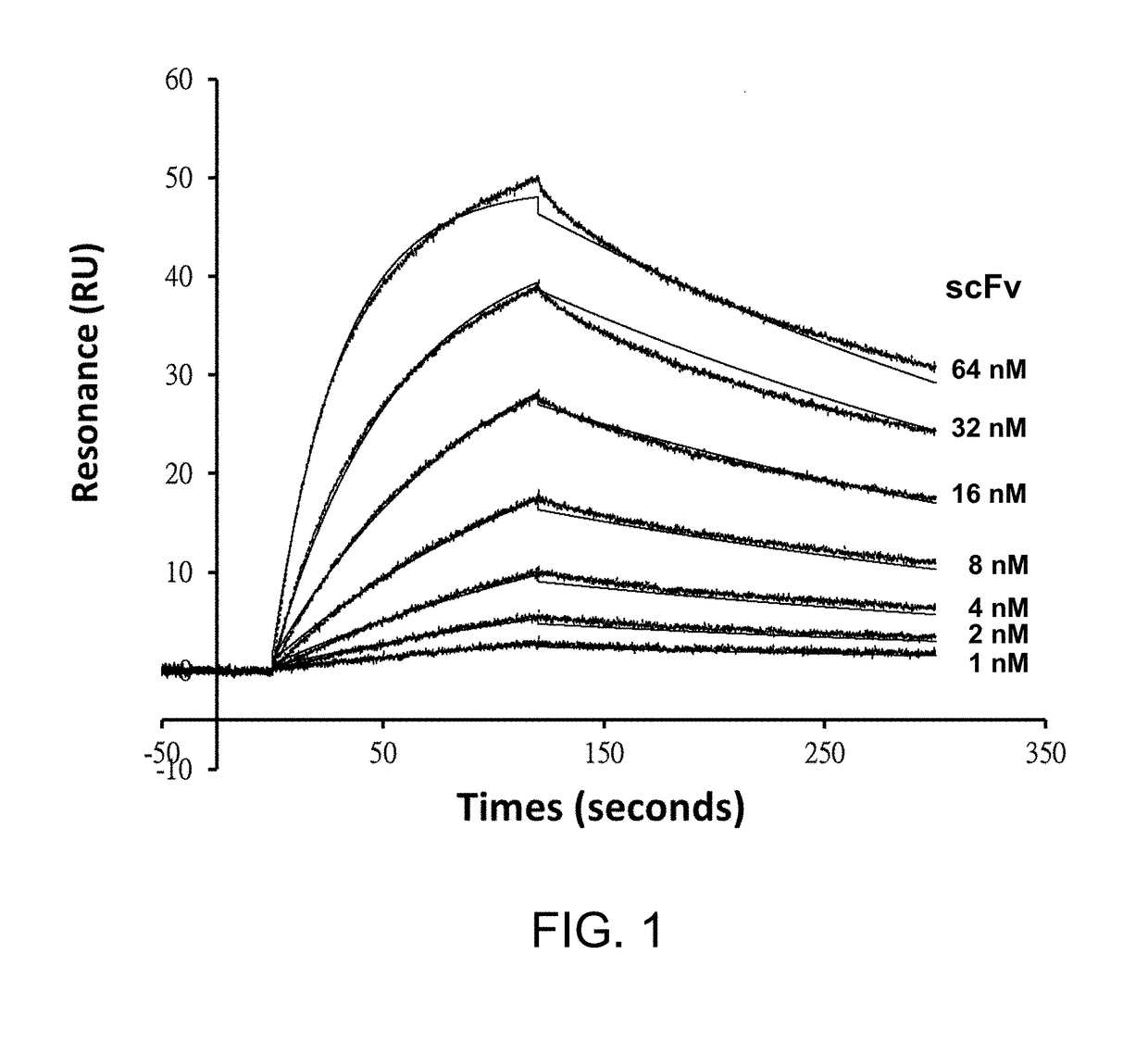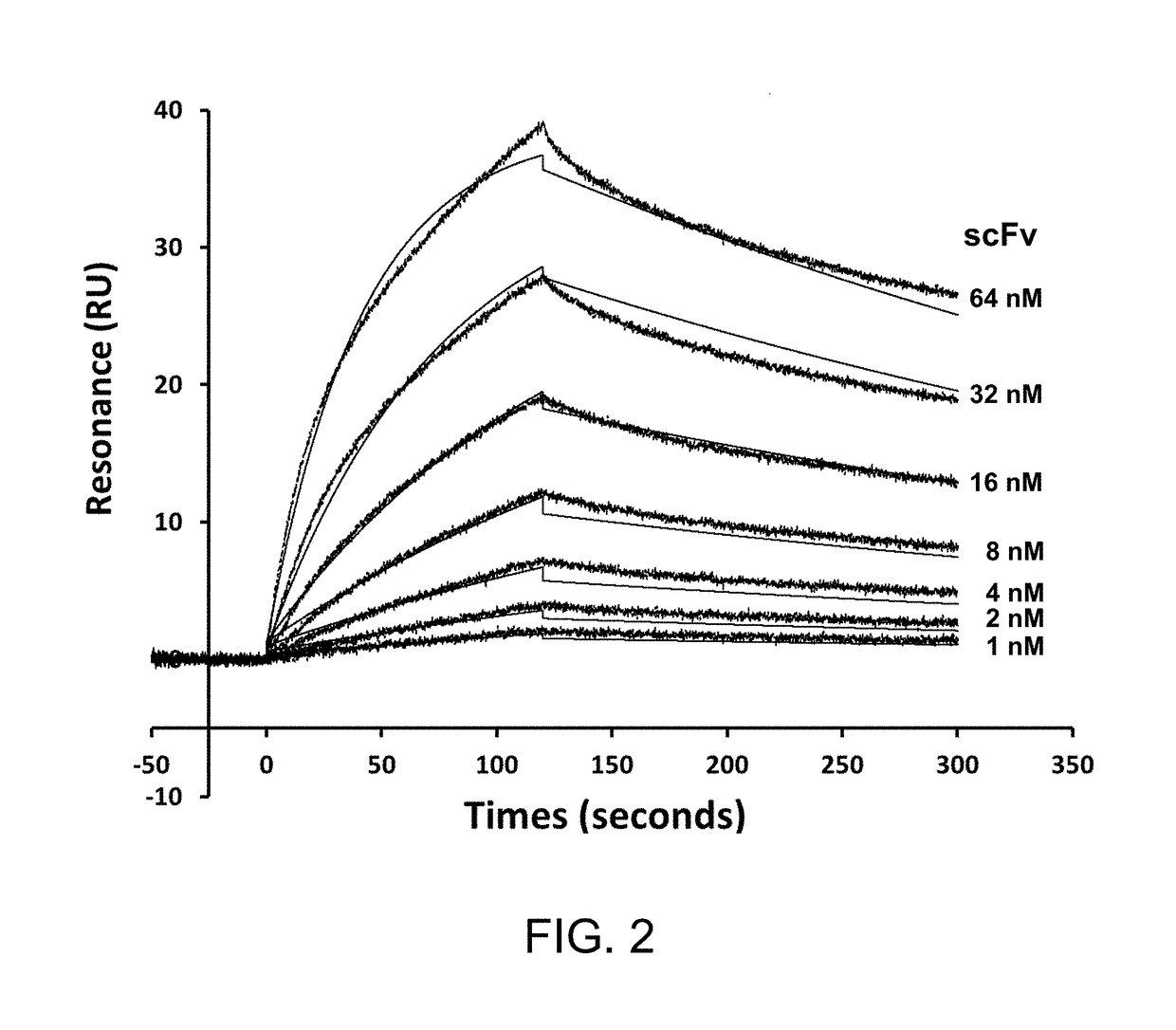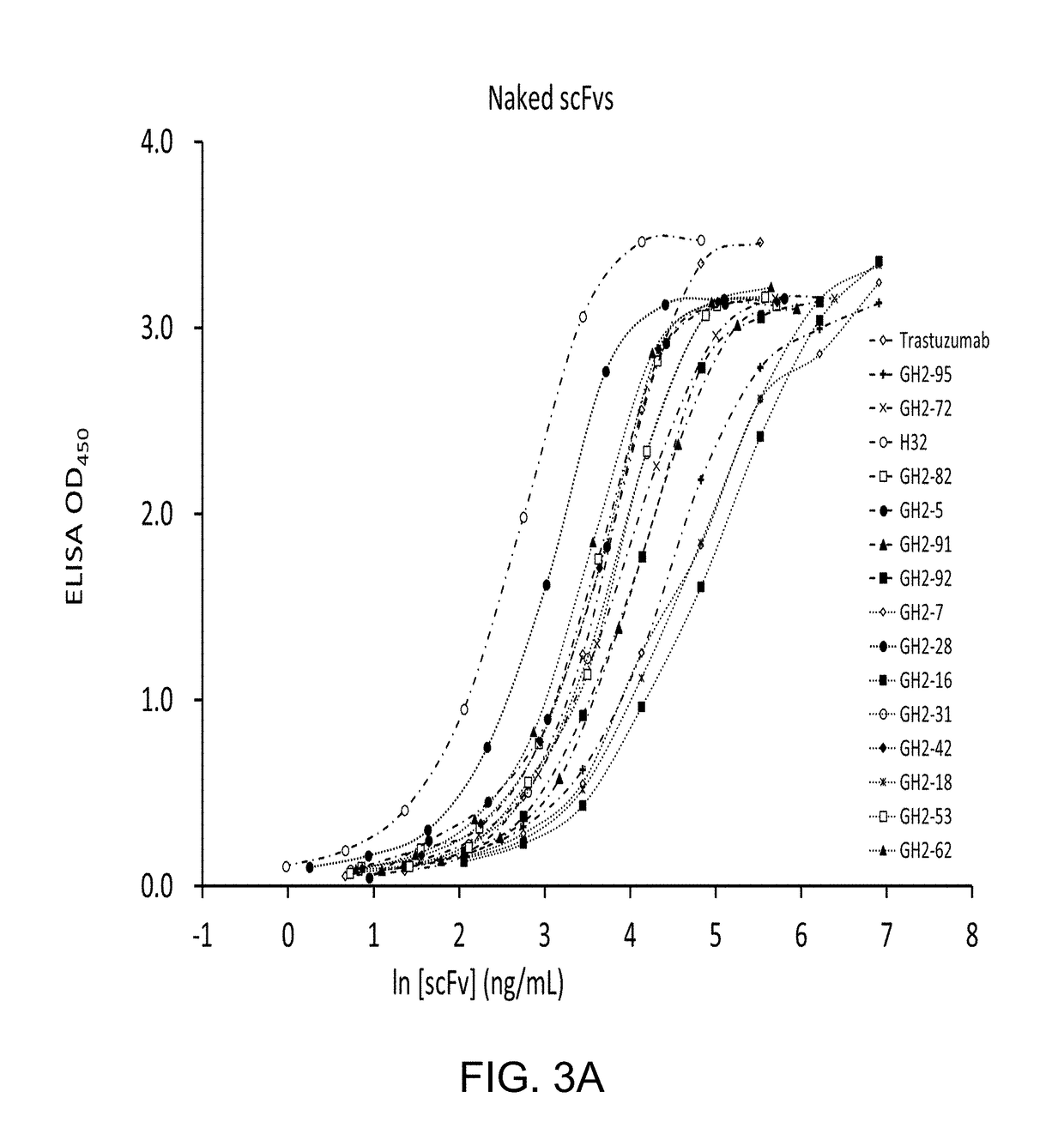High-throughput screening of functional antibody fragments, immunoconjugate comprising the same, and adaptor-drug conjugate for screening
a functional antibody and high-throughput technology, applied in the direction of antibody medical ingredients, drug compositions, peptides, etc., can solve the problems of apoptosis of cells, immunogenicity and toxicity of protein toxin payloads, and the mechanism of immunoconjugate internalization and delivery of toxin payloads remains limited
- Summary
- Abstract
- Description
- Claims
- Application Information
AI Technical Summary
Benefits of technology
Problems solved by technology
Method used
Image
Examples
example 1
[0142]High-Throughput Screening Platform for Non-Covalently Assembled Immunotoxins in Combination with Phage-Displayed Synthetic Antibody Libraries
[0143]High-throughput screening tests a large number of monoclonal antibodies for their biological function in parallel. Conventional tests of the function of immunotoxins require labor- and material-intensive sub-cloning and purification of the immunotoxins, limiting the throughput rate in discovering and optimizing the targeting antibodies. Monoclonal GH2 synthetic antibodies can be consistently expressed to the concentration on the order of 10 nM to 100 nM in soluble scFv form secreted by host E. coli cells into about 1 ml of medium in 96-deepwell plates. To enable a high-throughput screening platform for the soluble scFvs in culture media without purification of the scFvs, we constructed the adaptor-toxin fusion proteins: AL1-PE38KDEL and AL2-PE38KDEL, according to the structure of Protein A and Protein L in complex with a scFv of IGK...
example 2
[0147]Non-Covalently Assembled Immunotoxins with Monovalent Targeting Modules
[0148]AL1-PE38KDEL binds to scFv of IGKV1-NL1*01 / IGHV3-23*04 framework in high affinity. The N-to-C sequential arrangement of the Protein A and Protein L in the AL fragment of the adaptor-toxin fusion protein AL1-PE38KDEL is essential to avoid the clash between the Linker3 and the VL-VH linker, which is a 15-residue polypeptide linking the N-to-C sequential arrangement of the VL and VH domains in the scFv construct of the GH2 library. Linker3 is a 15-residue polypeptide linker, providing enough length to accommodate a scFv molecule simultaneously binding to the Protein A and the Protein L in the AL fragment. Linker4 is a 5-residue linker connecting the AL fragment to the toxin PE38KDEL. The adaptor-toxin fusion protein AL1-PE38KDEL has one high affinity scFv binding site, enabling binding of Protein A to the VH domain and Protein L to the VL domain simultaneously. Alternative binding configurations with onl...
example 3
[0149]Non-Covalently Assembled Immunotoxins with Bivalent Targeting Modules
[0150]The adaptor-toxin fusion protein AL2-PE38KDEL is expected to bind to two scFvs of IGKV1-NL1*01 / IGHV3-23*04 framework with two consecutive AL fragments. The two AL fragments are linked by Linker2, which is a 5-residue linker to prevent the formation of a scFv-binding site composed of the Protein L from the first AL fragment and the Protein A from the second AL fragment. As such, the AL2-PE38KDEL adaptor-toxin fusion protein is expected to contain two independent scFv binding sites with nano-molar affinity. Although the complex configuration binding to one scFv could occur by forming the complex with the Protein A from the first AL fragment and the Protein L from the second AL fragment, this configuration is anticipated to have lower affinity to the scFv in comparison with the binding configuration as described above. This anticipation arises on the basis that the entropy cost of forming the complex fixin...
PUM
| Property | Measurement | Unit |
|---|---|---|
| pH | aaaaa | aaaaa |
| pH | aaaaa | aaaaa |
| pH | aaaaa | aaaaa |
Abstract
Description
Claims
Application Information
 Login to View More
Login to View More - R&D
- Intellectual Property
- Life Sciences
- Materials
- Tech Scout
- Unparalleled Data Quality
- Higher Quality Content
- 60% Fewer Hallucinations
Browse by: Latest US Patents, China's latest patents, Technical Efficacy Thesaurus, Application Domain, Technology Topic, Popular Technical Reports.
© 2025 PatSnap. All rights reserved.Legal|Privacy policy|Modern Slavery Act Transparency Statement|Sitemap|About US| Contact US: help@patsnap.com



